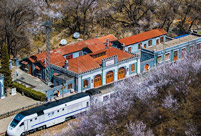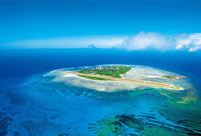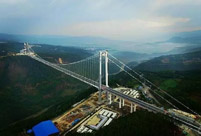

Jin Liqun, President of the Asian Infrastructure Investment Bank (AIIB), along with Takehiko Nakao, President of the Asian Development Bank (ADB), recently inked a memorandum of understanding in Germany, agreeing to intensify cooperation between the two institutions.
Through co-financing, knowledge sharing, and joint policy dialogues with member countries, the two institutions will work together across the areas of energy, transportation, telecommunications, rural and agricultural development, water, urban development and environmental protection.
It is estimated that between 2010 and 2020, developing nations in Asia will need a total of USD $8 trillion in infrastructure investment with an annual demand of over $700 billion. But multilateral development banks only invest $10 to $20 billion in infrastructure each year.
Against this backdrop, the establishment of the AIIB can inject a more sustainable impetus into the Asian economy and facilitate economic interactions between China and its neighbors by mobilizing more capital and supporting infrastructure construction.
At the same time, AIIB has attracted a significant number of member states from Asia, Oceania, Europe, Africa and South America, including several developed countries like the U.K., Germany and France.
The cooperation between the AIIB and the ADB signals the start of a very positive cooperation. As Chinese President Xi Jinping said at the inauguration ceremony for AIIB, "The founding and opening of the AIIB means a great deal to the reform of the global economic governance system. It is consistent with the evolving trends of the global economic landscape and will help make the economic governance system more just, equitable and effective."
Mutually beneficial cooperation is one such trend, especially in China. An old Chinese saying goes: "When everybody adds fuel, the flames rise high." Similarly, an African saying goes: "If you want to go fast, walk alone; if you want to go far, walk together."
This logic could also be applied to the founding of AIIB and the Belt and Road Initiative. Chinese leaders have reiterated on many occasions that the initiative is not a solo endeavor, but rather a group one. The success of these plans could give rise to a new path of cooperation in the 21st century, setting a precedent for government assistance, developmental finance and market allocation.
Taking infrastructure connectivity as its priority, the Belt and Road Initiative will promote the growth of trade for developing countries along the route. It will do this by promoting development in China.
China's development needs the world to succeed and vice versa. From peaceful development to global cooperation, from AIIB to the Belt and Road Initiative, all these concepts and plans reflect Chinese values going beyond colonialism, imperialism and hegemony. These philosophies are beneficial to the just, balanced, sustainable and inclusive development of mankind.
(The author is a special researcher with the Center of German Studies of Tongji University and a senior researcher at the Chongyang Institute for Financial Studies of Renmin University.)
The article is edited and translated from 人民日?qǐng)?bào)海外版:亞投行和亞行牽手了
 Beijing Style: ready for bare legs
Beijing Style: ready for bare legs Century-old station sees railyway evolution
Century-old station sees railyway evolution Amazing scenery of Xisha Islands
Amazing scenery of Xisha Islands Enthusiasts perform Kung Fu at Wudang Mountain
Enthusiasts perform Kung Fu at Wudang Mountain Stunning photos of China's fighter jets in drill
Stunning photos of China's fighter jets in drill Monk's mummified body to be made into a gold Buddha statue
Monk's mummified body to be made into a gold Buddha statue Asia's longest and highest suspension bridge to open to traffic
Asia's longest and highest suspension bridge to open to traffic China's first interactive robot looks like a beauty
China's first interactive robot looks like a beauty Vietnamese Su-30 fighters fly over Nanwei Island in South China Sea
Vietnamese Su-30 fighters fly over Nanwei Island in South China Sea Top 20 hottest women in the world in 2014
Top 20 hottest women in the world in 2014 Top 10 hardest languages to learn
Top 10 hardest languages to learn 10 Chinese female stars with most beautiful faces
10 Chinese female stars with most beautiful faces China’s Top 10 Unique Bridges, Highways and Roads
China’s Top 10 Unique Bridges, Highways and Roads Unpredictable Trump could swing either way on China
Unpredictable Trump could swing either way on China Military institution scandal highlights shady Putianese private clinics
Military institution scandal highlights shady Putianese private clinics How to maintain property in communist system looms large as land warrants expire
How to maintain property in communist system looms large as land warrants expire Yiwu, China’s wholesale capital, switches its economic growth engine from manufacturing to design
Yiwu, China’s wholesale capital, switches its economic growth engine from manufacturing to designDay|Week